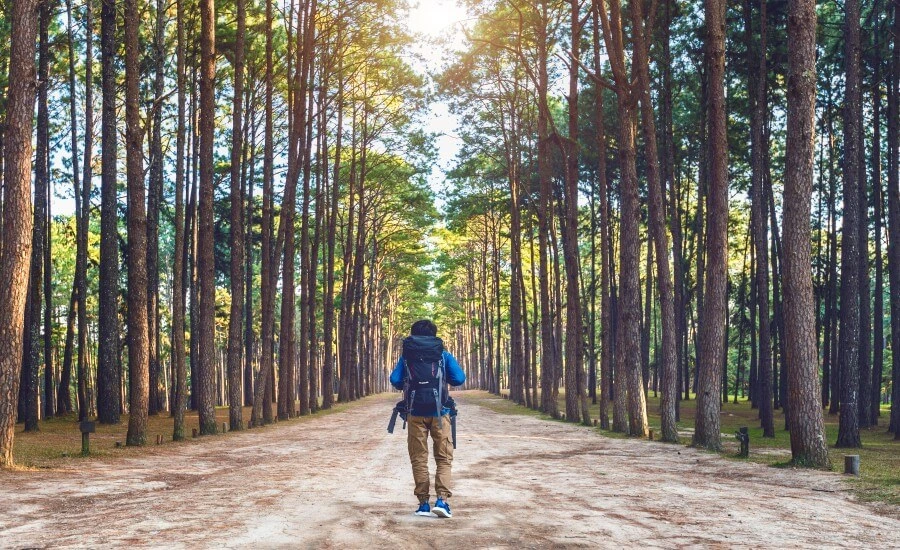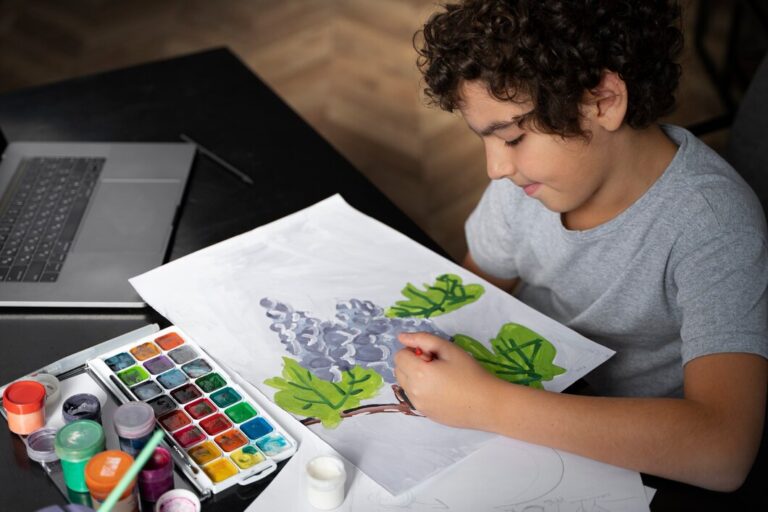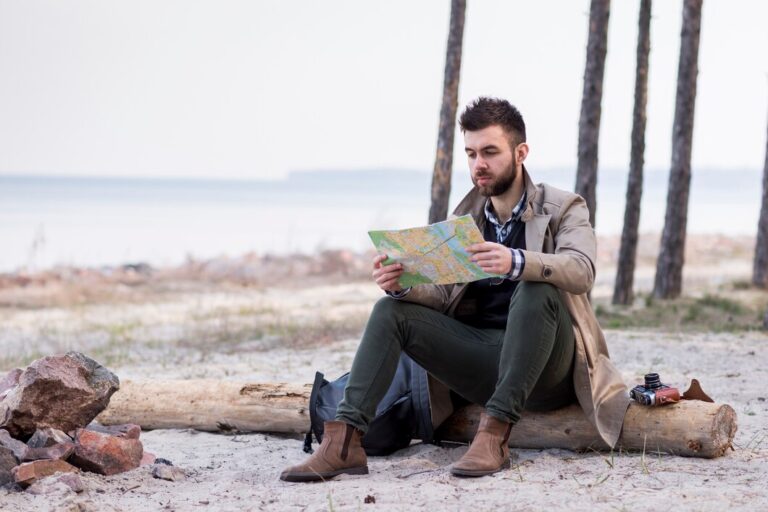
Imagine this: You’re perched on a mountainside, watching the sunrise paint the sky in hues you’ve only dreamed of. Instead of instinctively reaching for your phone to capture and share, you feel the cool morning air, hear the distant call of a bird, and simply absorb the breathtaking beauty. Your mind isn’t buzzing with notifications or the pressure to curate the perfect post; it’s still, present, and deeply connected to the moment. This isn’t a fantasy; it’s the profound reward of embracing a tech-free travel experience, particularly on a dedicated digital detox retreat.
We live in an era where technology, while incredibly useful, often becomes a barrier to authentic experience. Our devices constantly pull our attention away from the world around us, fragmenting our focus and preventing us from truly immersing ourselves in new environments and connecting with ourselves or others. This constant digital tether can turn even the most anticipated vacation into a series of screen-mediated moments, rather than genuine exploration and rejuvenation. This guide is your map to breaking free. You will learn How to Pack for a Digital Detox Retreat Essentials?; stripping away the non-essential digital clutter to make space for what truly matters: presence, connection, and the richness of unfiltered reality. Prepare to discover not just what to pack, but how to cultivate a mindset that embraces the profound benefits of unplugging.
The Unshackled Mind: Why Embrace a Digital Detox?

Why intentionally leave behind the devices that connect us, inform us, and entertain us? The answer lies in reclaiming something invaluable: our attention and our presence. Stepping away from the constant stream of digital information isn’t just about avoiding notifications; it’s an active choice to cultivate mental clarity and deepen our connection with the present moment.
Consider the mental bandwidth freed up when you’re not constantly checking emails, scrolling through social media, or reacting to news alerts. This newfound space allows your mind to wander, to reflect, to simply be. Research consistently points to the benefits of unplugging, including reduced stress and anxiety levels. The pressure to be constantly available and responsive dissolves, replaced by a sense of calm and control over your own time and attention. Have you ever noticed how fragmented your thoughts feel after jumping between multiple apps?
Furthermore, disconnecting fosters deeper self-awareness. Without external digital distractions, you become more attuned to your own thoughts, feelings, and physical sensations. It’s an opportunity to check in with yourself on a level that’s often drowned out by the digital noise. This introspection is crucial for personal growth and understanding what truly nourishes you.
Perhaps one of the most significant benefits is the enhancement of real-world connections. Without screens acting as intermediaries, conversations become more focused, eye contact increases, and you engage more fully with the people around you – whether fellow retreat participants or locals you encounter. It encourages genuine human interaction, fostering empathy and understanding. Ultimately, a digital detox is less about deprivation and more about enrichment, allowing you to fully savor the richness of your travel experience and return home feeling genuinely refreshed and recentered.
Key Benefits:
- Mental Clarity: Reduced mental clutter and improved focus.
- Stress Reduction: Less pressure from constant connectivity and notifications.
- Enhanced Presence: Deeper engagement with the current moment and surroundings.
- Improved Sleep: Reduced exposure to blue light and mental stimulation before bed.
- Stronger Connections: More meaningful interactions with others and oneself.
How to Pack for a Digital Detox Retreat: Essentials Only?

Packing for a digital detox retreat is an exercise in intentionality and minimalism. The goal isn’t just to pack light physically, but to lighten your mental load by consciously choosing items that support presence and disconnect from the digital world. This section focuses specifically on How to Pack for a Digital Detox Retreat: Essentials Only?, guiding you to bring what truly serves your experience.
Think of your suitcase or backpack not just as a container for items, but as a space reflecting your intention to unplug. Every item should have a purpose related to comfort, well-being, or engaging with the analog world.
Clothing: Prioritize comfort and practicality. Choose versatile pieces that can be layered and are suitable for the retreat’s environment and planned activities (like yoga, hiking, or meditation). Natural fibers like cotton, wool, or linen often feel better against the skin and align with a more grounded experience.
- Layers are Key: T-shirts, long-sleeved shirts, sweaters or fleeces, a waterproof/windproof outer layer.
- Comfortable Bottoms: Hiking pants, yoga pants, comfortable trousers or skirts.
- Basics: Sufficient underwear and socks (wool socks are great for hiking/variable temperatures).
- Footwear: Comfortable walking shoes or hiking boots, perhaps sandals or slippers for indoors.
- Activity-Specific: Swimsuit (if applicable), dedicated yoga or exercise wear.
Toiletries: Keep it simple. Use travel-sized containers to save space and reduce waste. Focus on essentials for hygiene and basic comfort.
- Toothbrush, toothpaste, floss.
- Soap or body wash, shampoo, conditioner (solid bars are eco-friendly and travel well).
- Deodorant.
- Basic skincare (moisturizer, sunscreen).
- Any necessary personal medications (bring extra just in case).
- Insect repellent (if needed for the location).
Comfort & Well-being: These items support relaxation and analog engagement.
- A Physical Book (or two): Choose something engaging or reflective. Avoid heavy textbooks; think absorbing fiction or inspiring non-fiction.
- Journal and Pen: Essential for reflection, capturing thoughts, sketching, or simply doodling. This is your primary tool for processing the experience.
- Reusable Water Bottle: Stay hydrated!
- Eye Mask and Ear Plugs: Ensure restful sleep, especially if sharing accommodation.
- Small First-Aid Kit: Band-aids, antiseptic wipes, pain relievers, blister treatment.
- Headlamp or Small Flashlight: Essential for navigating after dark without relying on a phone.
What NOT to Pack: This is as crucial as what to pack. Leave behind:
- Laptop, tablet, e-reader (unless specifically permitted for essential reading and offline use only).
- Smartwatch (a simple, non-connected watch is fine if you need the time).
- Portable gaming devices.
- Work-related materials.
- Excessive jewelry or valuables.
The act of packing mindfully sets the stage for your entire retreat. By choosing only the essentials, you create physical and mental space to fully embrace the unplugged experience ahead. Boldly leave the digital baggage behind.
Navigating the Analog Way: Finding Your Path Screen-Free

One of the most common dependencies on technology during travel is navigation. GPS apps have made finding our way effortless, but perhaps too effortless. Relying solely on a digital dot moving across a screen distances us from our surroundings. Embracing analog navigation during your digital detox retreat is an invitation to engage directly with the landscape and sharpen your observational skills.
Before the ubiquity of smartphones, travelers relied on physical maps and compasses. There’s a unique satisfaction in unfolding a paper map, tracing your route with a finger, and correlating the symbols with the landmarks you see around you. It forces you to pay attention – to notice the curve of a road, the fork in a trail, the position of the sun, the flow of a river.
- Invest in a Good Map: Obtain a detailed physical map of the retreat area beforehand. Study it. Learn to read the legend, understand contour lines (if applicable), and identify key features.
- Learn Basic Compass Skills: You don’t need to be an orienteering expert, but understanding how to find north and orient your map can be empowering and useful, especially if hiking is involved.
- Observe Your Surroundings: Use natural landmarks – distinctive trees, rock formations, buildings, streams – as waypoints. This deepens your connection to the place.
- Ask for Directions: This might feel intimidating initially, but interacting with locals or retreat staff to ask for directions fosters human connection and often leads to unexpected, helpful insights or recommendations you won’t find on any app. It turns navigation into a social, relational activity.
Think of it like this: Following a GPS is like watching a movie of your journey, directed by an algorithm. Navigating with a map and your senses is like living the journey, making choices, and truly understanding the terrain you’re moving through. It might take slightly longer, you might even take a wrong turn (which often leads to discovery!), but the experience is undeniably richer and more memorable. When was the last time you truly looked at the landscape to find your way?
Capturing Moments, Not Just Pixels: Analog Memory Making

In our hyper-documented world, the reflex to capture every potentially interesting moment on our phone camera is strong. We filter, edit, and post, often experiencing our travels through the lens rather than directly. A digital detox retreat challenges this impulse, encouraging you to prioritize being in the moment over documenting it. But this doesn’t mean you can’t preserve memories. It simply means exploring richer, more intentional analog methods.
The most powerful memory-making tool you bring is your own presence and attention. By truly immersing yourself in an experience – noticing the sounds, smells, textures, tastes, and feelings – you embed it far more deeply in your memory than a fleeting photo ever could. However, tangible methods can beautifully supplement this internal recording:
- Journaling: Your journal is your primary companion. Describe the sunset instead of just snapping it. Write down snippets of conversation, feelings that arise during meditation, observations from a nature walk. Use sensory details. What did the forest smell like? What was the texture of the handmade pottery? This practice deepens reflection and provides a rich record to revisit.
- Sketching or Drawing: You don’t need to be an artist. Simple sketches of a landscape, a flower, an interesting object, or even a quick diagram of your retreat space can capture the essence of a place in a uniquely personal way. It forces you to observe closely.
- Analog Photography:
- Disposable Cameras: Fun, simple, and bring back the delightful anticipation of waiting for prints. The limited number of shots encourages mindful composition – you make each picture count.
- Film Cameras (SLR or Point-and-Shoot): For those who enjoy the craft of photography, shooting film requires more intention and slows down the process. It connects you to the fundamentals of light and composition.
- Instant Cameras (like Polaroid/Instax): Offer immediate tangible prints, perfect for capturing moments with new friends at the retreat. The single print feels more special than a digital file.
Consider the difference: Scrolling through hundreds of digital photos often feels detached. Holding a physical print, reading a journal entry filled with sensory details, or looking at a sketch transports you back to the feeling of the moment. It’s about quality over quantity, depth over breadth. Ask yourself: Do I want a gallery of digital images, or a collection of deeply felt experiences and tangible reminders? Choose presence, and let the memories steep.
Cultivating Connection: Communicating Mindfully
Disconnecting from devices doesn’t mean disconnecting from people; often, it means the opposite. It’s an opportunity to deepen connections – both with yourself and with those around you – in a more intentional and meaningful way. Without the constant interruption of notifications or the urge to check in online, you create space for genuine human interaction and quiet self-reflection.
Connecting with Others: At a digital detox retreat, you’re surrounded by others sharing a similar intention. This is fertile ground for authentic connection.
- Engage in Conversation: Really listen when others speak. Ask open-ended questions. Share your own experiences thoughtfully. Without phones to retreat into during lulls, conversations often go deeper.
- Shared Activities: Participate fully in group activities, whether it’s a yoga session, a workshop, a hike, or a communal meal. Shared experiences build bonds.
- Observe and Appreciate: Simply being present with others, even in silence, can foster a sense of community. Notice body language, tone of voice – the nuances often missed when multitasking with tech.
Connecting with Yourself: The quiet afforded by a digital detox is invaluable for self-reflection.
- Journaling: As mentioned before, this is your private space to converse with yourself. Explore thoughts, feelings, and insights that arise.
- Meditation or Mindful Moments: Even if not part of a formal session, take time to sit quietly, focus on your breath, and observe your inner landscape.
- Letter Writing/Postcards: Consider writing a letter to yourself to open after the retreat, capturing your intentions or insights. Or, embrace the charmingly retro act of writing postcards to loved ones. Describing your experience on paper requires a different kind of thoughtfulness than a quick text or email.
Managing External Communication: It’s crucial to prepare loved ones for your period of disconnection.
- Inform Key Contacts: Let family, close friends, and necessary work contacts know you’ll be unreachable or have very limited contact. Provide the retreat’s emergency contact number for true emergencies only.
- Set Expectations: Clearly define the boundaries. Reassure them that no news is good news. This manages their expectations and reduces your own anxiety about missing something “urgent.”
- Embrace the Liberation: Trust that the world will continue without your constant input. Allow yourself this period of genuine unavailability.
By replacing digital pings with mindful presence and conversation, you nourish connections that are far more satisfying and restorative. What might you discover in the quiet spaces between words?
Tech-Free Activity Guide for Your Retreat

A digital detox retreat isn’t about boredom; it’s about replacing screen time with activities that engage your senses, calm your mind, and connect you to the physical world. Here are some ideas to embrace during your unplugged time:
- Mindful Movement: Engage in yoga, tai chi, or simple stretching. Pay attention to your breath and the sensations in your body. Feel the earth beneath your feet.
- Nature Immersion: Go for walks or hikes without headphones. Listen to the birdsong, the wind in the trees, the crunch of leaves underfoot. Notice the details – the patterns on a leaf, the texture of bark, the way light filters through the canopy. Sit quietly and simply observe.
- Creative Expression:
- Journaling/Writing: Capture thoughts, poems, stories, or reflections.
- Sketching/Drawing: Draw your surroundings, objects, or even abstract patterns.
- Crafts: Engage in any available craft activities – pottery, weaving, knitting, nature art (like making mandalas from stones and leaves). Working with your hands is incredibly grounding.
- Reading: Immerse yourself completely in a physical book without the distraction of hyperlinks or notifications. Feel the texture of the paper, savor the words.
- Mindfulness & Meditation: Participate in guided sessions or practice independently. Focus on your breath, do a body scan, or practice loving-kindness meditation.
- Engaged Conversation: Talk with fellow retreat participants. Share stories, listen deeply, learn from each other’s perspectives. Play board games or card games together.
- Stargazing: If you’re away from city lights, spend time looking at the night sky. Try to identify constellations. Contemplate the vastness of the universe.
- Mindful Eating: Pay full attention to your meals. Notice the colors, textures, smells, and tastes of your food. Eat slowly and savor each bite. Express gratitude for the nourishment.
- Simple Rest: Allow yourself guilt-free naps or periods of simply resting quietly, observing your thoughts without judgment. Sometimes the most productive activity is non-activity.
- Contemplative Observation: Find a comfortable spot and simply watch the world go by – clouds drifting, insects moving, light changing – without any goal other than observation.
These activities shift your focus from passive consumption to active participation and presence. Which of these analog delights calls to you most?
Common Concerns & Solutions for Tech-Free Travel

The idea of traveling completely unplugged can feel daunting. Our devices have become safety nets and convenience tools. Addressing common fears head-on can ease the transition:
- Concern: “What if there’s an emergency back home and no one can reach me?”
- Solution: Before you leave, designate one or two key contacts and provide them with the retreat center’s emergency phone number. Instruct them to use it only for genuine, urgent emergencies. Trust that this system works for critical situations. Empower your contacts with clear guidelines.
- Concern: “I’ll get lost without GPS!”
- Solution: Embrace analog navigation! Study physical maps beforehand, learn basic compass skills if appropriate, and don’t be afraid to ask locals or staff for directions. See getting slightly lost as an opportunity for discovery, not disaster. Build your navigational confidence.
- Concern: “I’ll be bored without my phone for entertainment.”
- Solution: Reframe “boredom” as “space.” This is your chance to reconnect with simpler pleasures: reading a book, journaling, observing nature, engaging in conversation, or simply letting your mind wander. The initial restlessness often gives way to profound calm and creativity. Embrace the quiet.
- Concern: “How will I capture memories without my amazing phone camera?”
- Solution: Focus on experiencing moments deeply, which embeds them in memory more effectively than photos. Use a journal to capture sensory details and feelings. Experiment with analog cameras (disposable, film, instant) for a different, more intentional approach to photography. Prioritize presence over pixels.
- Concern: “I’ll miss out on important news or social updates (FOMO).”
- Solution: Recognize that the vast majority of digital updates are not truly urgent. Trust that anything genuinely critical will filter through your emergency contact system. Celebrate the Joy of Missing Out (JOMO) – the relief and peace that comes from stepping away from the constant stream of information. Discover JOMO.
- Concern: “I use apps for translation, currency conversion, etc.”
- Solution: Prepare beforehand! Pack a small phrasebook or dictionary if language is a barrier. Jot down key exchange rates. Look up essential information before you disconnect. Rely on the resourcefulness that travelers used for decades before smartphones. Tap into analog resourcefulness.
Traveling tech-free requires a shift in mindset from reliance on external devices to reliance on internal resources (observation, awareness, communication) and simple analog tools. It’s about trusting yourself and the process.
Before You Go: Your Tech-Free Prep Checklist

Preparation is key to a smooth and worry-free digital detox experience. Run through this checklist before you embark:
- Inform Key People: Notify close family, friends, and necessary work contacts about your limited/no connectivity. Explain the purpose of your retreat.
- Provide Emergency Contact Info: Give the retreat’s emergency number to 1-2 designated contacts for true emergencies ONLY.
- Set Up ‘Out of Office’: Create an email auto-responder and voicemail message stating you are unreachable until your return date.
- Charge Emergency Device (If Allowed/Necessary): Some retreats allow a basic phone turned OFF for true emergencies. Charge it fully and then turn it off and pack it away. Confirm the retreat’s policy. Do NOT plan to use this for casual checks.
- Download Offline Resources (Sparingly): If absolutely necessary before the retreat (e.g., offline map of the immediate vicinity for arrival), do it well in advance. Avoid the temptation to download entertainment.
- Pack Your Analog Toolkit: Ensure you have your physical maps, journal, pens, books, analog camera (if using), flashlight, and simple watch.
- Withdraw Necessary Cash: Don’t rely on payment apps; ensure you have sufficient cash for any small purchases or potential needs as advised by the retreat.
- Mentally Prepare: Set your intention. Remind yourself why you are doing this. Visualize yourself enjoying the peace and presence of being unplugged. Anticipate potential restlessness and plan how you’ll meet it with curiosity rather than anxiety.
- Leave Temptation Behind: Physically leave unnecessary gadgets (laptop, tablet, smartwatch) at home. Don’t just turn them off; remove the temptation entirely.
- Final Check: Review the retreat’s specific packing list and guidelines one last time.
Completing this checklist helps ensure that once you arrive, you can fully surrender to the experience without logistical worries or digital temptations pulling you back.
Conclusion: Reclaiming Your Presence, One Unplugged Journey at a Time

Packing for a digital detox retreat is far more than just deciding which clothes to bring. It’s a conscious act of choosing presence over distraction, depth over superficiality, and authentic connection over digital mediation. By carefully curating how to pack for a digital detox retreat essentials?, you are not just lightening your luggage; you are clearing space in your mind and heart for the richness of unfiltered experience.
Imagine returning from your travels not with a camera roll full of fleeting snapshots, but with a soul full of deeply felt moments – the warmth of genuine conversation, the clarity of a quiet mind, the awe inspired by nature’s unfiltered beauty. Trading GPS for a map reconnects you to the landscape. Swapping a camera phone for a journal deepens your reflection. Replacing constant notifications with quiet observation restores your inner calm.
The benefits extend far beyond the retreat itself. Learning to navigate, connect, and simply be without a digital crutch equips you with invaluable skills for a more mindful life back home. You might find yourself reaching for your phone less, savoring small moments more, and prioritizing real-world interactions.
Your challenge, should you choose to accept it, is this: On your next trip, whether it’s a full digital detox retreat or just a weekend getaway, dare to leave one piece of technology behind. Start small. Pack a physical book instead of an e-reader. Use a paper map for a day. Commit to keeping your phone off during meals. Experience the difference. Discover the profound joy and liberation that comes from packing light and living deeply. Are you ready to answer the call of the unplugged path?





